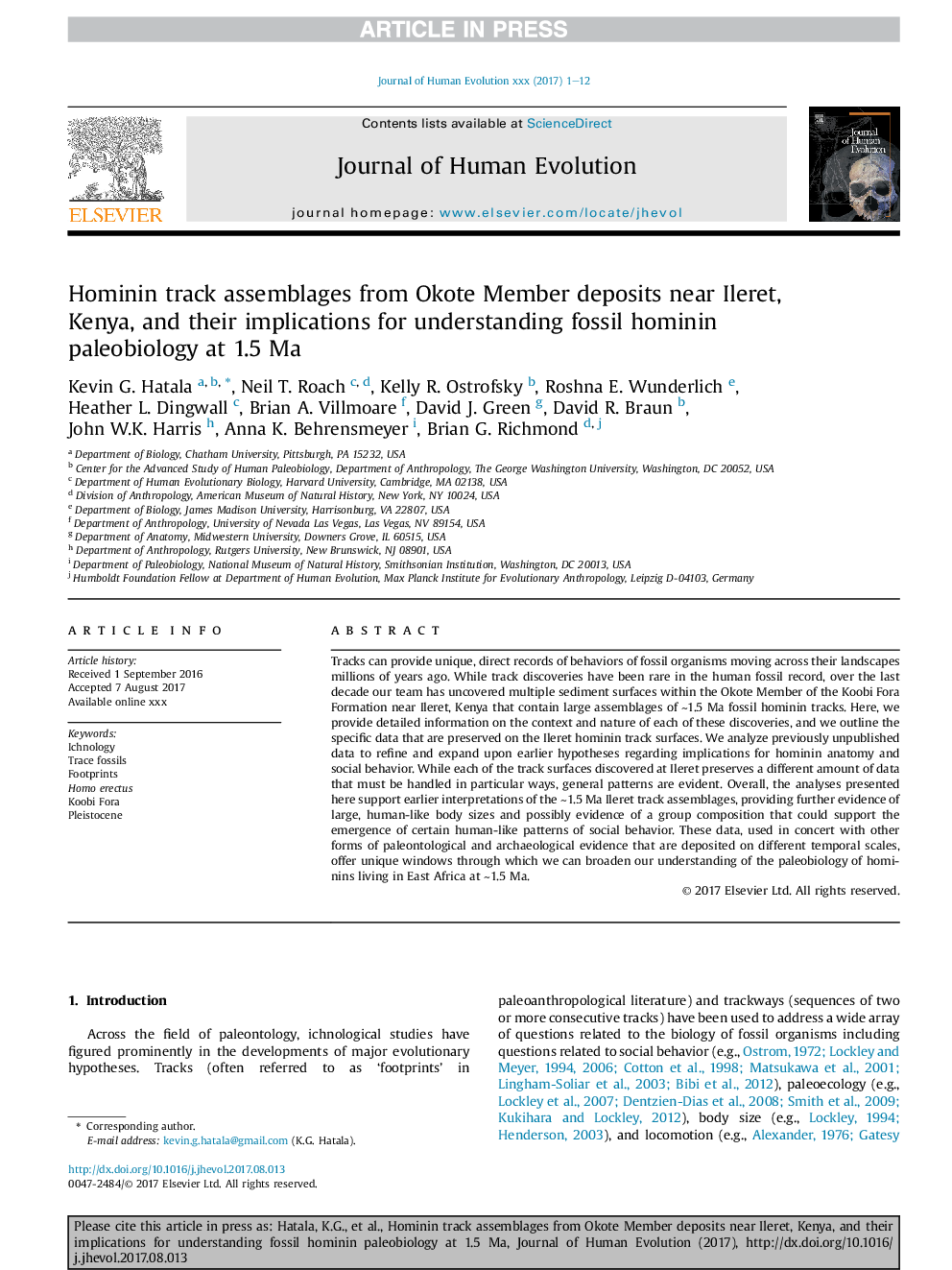| Article ID | Journal | Published Year | Pages | File Type |
|---|---|---|---|---|
| 5766756 | Journal of Human Evolution | 2017 | 12 Pages |
Abstract
Tracks can provide unique, direct records of behaviors of fossil organisms moving across their landscapes millions of years ago. While track discoveries have been rare in the human fossil record, over the last decade our team has uncovered multiple sediment surfaces within the Okote Member of the Koobi Fora Formation near Ileret, Kenya that contain large assemblages of â¼1.5Â Ma fossil hominin tracks. Here, we provide detailed information on the context and nature of each of these discoveries, and we outline the specific data that are preserved on the Ileret hominin track surfaces. We analyze previously unpublished data to refine and expand upon earlier hypotheses regarding implications for hominin anatomy and social behavior. While each of the track surfaces discovered at Ileret preserves a different amount of data that must be handled in particular ways, general patterns are evident. Overall, the analyses presented here support earlier interpretations of the â¼1.5Â Ma Ileret track assemblages, providing further evidence of large, human-like body sizes and possibly evidence of a group composition that could support the emergence of certain human-like patterns of social behavior. These data, used in concert with other forms of paleontological and archaeological evidence that are deposited on different temporal scales, offer unique windows through which we can broaden our understanding of the paleobiology of hominins living in East Africa at â¼1.5Â Ma.
Related Topics
Life Sciences
Agricultural and Biological Sciences
Ecology, Evolution, Behavior and Systematics
Authors
Kevin G. Hatala, Neil T. Roach, Kelly R. Ostrofsky, Roshna E. Wunderlich, Heather L. Dingwall, Brian A. Villmoare, David J. Green, David R. Braun, John W.K. Harris, Anna K. Behrensmeyer, Brian G. Richmond,
